Crystallographic Information and Data Management
A Satellite Symposium to the 28th European Crystallographic Meeting
University of Warwick, Coventry, England
Sunday, August 25, 2013
An important one-day Symposium to celebrate and develop the role of the CIF information exchange standard in crystallography: from diffraction images to structure solution, refinement, validation, publication and archiving. Speakers will explain how crystallography, particularly in its application to structure determination, is a field with supremely well developed practices in the collection, analysis, interpretation, publication and archiving of raw and processed data, and the structural information derived from diffraction experiments. These practices are so well ingrained that many crystallographers are unaware of how well we do these things, compared with other scientific fields. The Symposium will remind the crystallographic community of its great track record in data handling, and also anticipate further advances in data management, integration, validation and curation. Much of the community's success in information management arises from the Crystallographic Information Framework (CIF), a standard now entering its third decade, developed originally for small-molecule structural modelling but which is now used directly in many areas of crystallography, or informs the development of formal data definitions in others. New developments in the CIF standard will maintain our position at the leading edge of scientific information characterisation and exchange.
Programme
I. Standard information exchange formalisms09:05 A coherent information flow in crystallography - B. McMahonAbstract | Presentation
Brian McMahon is the Research and Development Officer at the International Union of Crystallography's offices in Chester, UK, and a former IUCr Representative to CODATA, the ICSU Committee on Scientific Data. He is Coordinating Secretary of COMCIFS and a Co-editor of International Tables for Crystallography Volume G: Definition and exchange of crystallographic data. (hide | hide all)09:30 mmCIF and structural bioinformatics - J. WestbrookAbstract | Presentation
John Westbrook is a Project Team Leader of the RCSB Protein Data Bank, and is based at Rutgers University. He has played key roles in creating and maintaining the PDB database schema, in developing many of the software tools that underpin PDB operation, and in developing formal ontologies with other structural biology communities. He is a member of COMCIFS. (hide | hide all)09:55 pdCIF and the messy world of real data - B. H. TobyAbstract | Presentation
Brian Toby has had extensive professional experience in the chemical industry, academic and in the government sectors, where the latter included both synchrotron and research reactor facilities. His research interests are in understanding how the arrangements of atoms in solids determine how the material functions, chemically or physically, and for the development and teaching of techniques for those studies. To do this, he works on software and instrument development as well as conducts measurements and analyzes the results. He has collaborated with researchers in academia, industry and government to produce 120 papers that have been cited nearly 6000 times. He is a former member of COMCIFS and was the leader of the powder CIF (pdCIF) dictionary development effort. (hide | hide all)II. Improving the management of experimental data10:40 The data explosion and the need to manage diverse data sources in scientific research - S.J. ColesAbstract | Presentation
Simon J. Coles is Head of the UK National Crystallography Service and a member of staff of the Department of Chemistry at Southampton University. (hide | hide all)11:05 Deposition and use of raw diffraction images - J.R. HelliwellAbstract | Presentation
John R. Helliwell trained in physics and molecular biophysics and is now Emeritus Professor of Structural Chemistry at the University of Manchester. He is former Editor-in-Chief of the journals of the International Union of Crystallography and Past President of the European Crystallographic Association. His research involves crystallography methods developments applied to structural chemistry and biology. He is currently IUCr representative to CODATA (the ICSU Committee for Scientific Data) and ICSTI (the International Council for Scientific and Technical Information), and chairs the IUCr Diffraction Data Deposition Working Group. He is also a member of the CODATA/VAMAS Working Group on the description of nanomaterials. (hide | hide all)11:30 Managing research data for diverse scientific experiments - E. YangAbstract | Presentation
Erica Yang is a senior computer scientist at the STFC Rutherford Appleton Laboratory, where she works in the Scientific Computing Department (SCD). She is also the national labs services liaison officer, responsible for developing a sustainable long term data services research and development strategy and roadmap for STFC's national laboratories. She has worked with the UK National Crystallography Service and the University of Cambridge to develop cross-organisation data infrastructure technologies for the UK structural science communities. She also manages and directs projects involving STFC's facilities and large scale data and HPC infrastructures. In EU FP7 project "PaNData-ODI", she works closely with international facilities (e.g. ESRF, ILL, DESY) to define and develop a fully integrated and cross-facility data management roadmap and services for EU photon and neutron communities. (hide | hide all)11:55 Managing crystallographic data in facilities using integrated CIF, HDF5 and NeXus - H.J. BernsteinAbstract | Presentation
Herbert J. Bernstein is Professor of Mathematics and Computer Science at Dowling College, Oakdale, NY. He is a member of COMCIFS, Chair of the imgCIF dictionary working group, and lead developer of CIFtbx, a Fortran library for handling CIF data. He is also a member of the NeXus International Advisory Committee (NIAC). (hide | hide all)12:20 Research data management and UK funding policies - S. HodsonAbstract | Presentation
Simon Hodson is Executive Director of CODATA http://www.codata.org, an organisation whose mission is to strengthen international science for the benefit of society by promoting improved scientific and technical data management and use. He also sits on the Board of Directors of the Dryad data repository http://datadryad.org, a not-for-profit initiative to make the data underlying scientific publications discoverable, freely reusable, and citable. From 2009 to 2013, as Programme Manager, he led two successive phases of Jisc's innovative Managing Research Data programme http://researchdata.jiscinvolve.org/wp/. (hide | hide all)III. The integrity of published information13:45 Publication of small-unit-cell structures in Acta Crystallographica - M.A. HoylandAbstract | Presentation
Michael A. Hoyland is a Systems Developer at the International Union of Crystallography, Chester, UK. He maintains the checkCIF web service for validating small-unit-cell structures, and is lead developer of the submission and review system for authors of IUCr journals. (hide | hide all)14:10 Validating a small-unit-cell structure; understanding checkCIF reports - A. LindenAbstract | Presentation
For this to work well, validation protocols have to keep up with advances in structure determination methodologies. Consequently, it is important that CIF tools and definitions are both practical and extended and revised regularly. The purpose and output of validation also have to be understood easily by users, reviewers and journal editors, some of whom may not be expert crystallographers. Anthony Linden is a Research Group Leader at the X-ray Crystallography Facility, Institute of Organic Chemistry, University of Zurich, and Section Editor of Acta Crystallographica Section C. (hide | hide all)14:35 Writing a macromolecular structure paper with publBio - M. WeissAbstract | Presentation
Manfred Weiss works at the Institute for Soft Matter and Functional Materials of the Helmholtz Zentrum Berlin, and is a Section Editor of Acta Crystallographica Section F. He has been a Co-editor of Acta Crystallographica Section D since 2002, is a member of the IUCr Commission on Crystallographic Teaching and a Consultant for the IUCr Commission on Biological Macromolecules. (hide | hide all)15:00 Deposition and validation of macromolecular structures - S. VelankarAbstract | Presentation
Sameer Velankar is a team leader at the EBI, responsible for content and integration of the Protein Data Bank in Europe (PDBe) resource. He earned his PhD in Structural Biology from the Indian Institute of Science in Bangalore, India in 1997, working on protein crystallographic studies of thymidylate synthase and triose phosphate isomerase. He then joined Dale Wigley's group in Oxford for post-doctoral research on the elucidation of the mechanism of DNA helicase. He has worked with and contributed to all parts of the PDBe team's operations, from annotation of newly deposited structures to the development of advanced PDBe services. (hide | hide all)IV. Towards ever better science15:45 Data quality and the value of structural databases - C. GroomAbstract | Presentation
Colin Groom is the Executive Director of the Cambridge Crystallographic Data Centre. After a career in academia in the UK and in New Zealand, Dr Groom joined Pfizer where he established the protein crystallography group in the UK. He subsequently held various computational and informatics roles in the UK and US. Following this he joined Celltech/UCB, leading investigational chemistry and computer-assisted drug design groups. (hide | hide all)16:10 Towards the semantic web of science - P. Murray-RustAbstract | Presentation
Peter Murray-Rust was until 2012 Reader in Molecular Informatics at the Unilever Centre for Molecular Informatics, University of Cambridge. He is co-developer with Henry Rzepa of Chemical Markup Language (CML) and a Consultant to COMCIFS. (hide | hide all)16:35 Into the future with CIF - N. SpadacciniAbstract | Presentation
Nick Spadaccini is one of the main authors of the STAR File format, the STAR methods dictionary development language (DDLm) and the dictionary methods evaluator software dREL. (hide | hide all) |
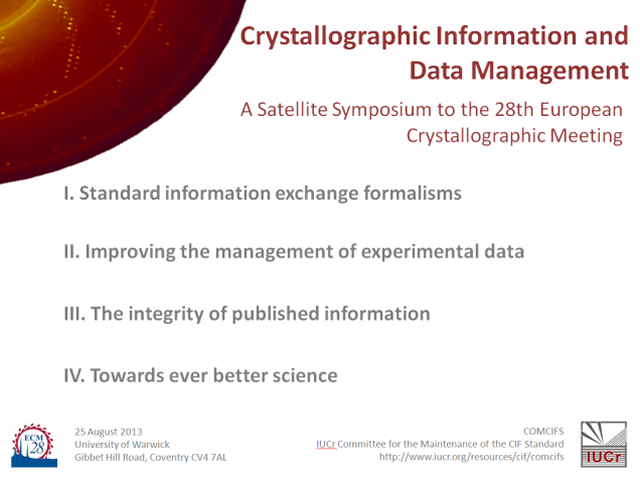 |
I. Standard information exchange formalismsBrian McMahon: A coherent information flow in crystallography ![[Brian McMahon]](https://www.iucr.org/__data/assets/image/0003/80319/bm.jpg)
(19 min 29 sec) John Westbrook: mmCIF and structural bioinformatics ![[John Westbrook]](https://www.iucr.org/__data/assets/image/0003/80337/jw.jpg)
(24 min 30 sec) Brian Toby: pdCIF and the messy world of real data ![[Brian Toby]](https://www.iucr.org/__data/assets/image/0015/80322/bt.jpg)
(22 min 31 sec) II. Improving the management of experimental dataSimon Coles: The data explosion and the need to manage diverse data sources in scientific research ![[Simon Coles]](https://www.iucr.org/__data/assets/image/0018/80352/sc.jpg)
(21 min 58 sec) John Helliwell: Deposition and use of raw diffraction images ![[John Helliwell]](https://www.iucr.org/__data/assets/image/0018/80334/jrh.jpg)
(22 min 31 sec) Erica Yang: Managing research data for diverse scientific experiments ![[Erica Yang]](https://www.iucr.org/__data/assets/image/0003/80328/ey.jpg)
(24 min 39 sec) Herbert Bernstein: Managing crystallographic data in facilities using integrated CIF, HDF5 and NeXus ![[Herbert Bernstein]](https://www.iucr.org/__data/assets/image/0015/80331/hjb.jpg)
(24 min 14 sec) Simon Hodson: Research data management and UK funding policies ![[Simon Hodson]](https://www.iucr.org/__data/assets/image/0003/80355/sh.jpg)
(26 min 54 sec) III. The integrity of published informationMike Hoyland: Publication of small-unit-cell structures in Acta Crystallographica ![[Mike Hoyland]](https://www.iucr.org/__data/assets/image/0015/80340/mah.jpg)
(18 min 38 sec) Tony Linden: Validating a small-unit-cell structure; understanding checkCIF reports ![[Tony Linden]](https://www.iucr.org/__data/assets/image/0018/80316/al.jpg)
(23 min 53 sec) Manfred Weiss: Writing a macromolecular structure paper with publBio ![[Manfred Weiss]](https://www.iucr.org/__data/assets/image/0018/80343/mw.jpg)
(17 min 39 sec) Sameer Velankar: Deposition and validation of macromolecular structures ![[Sameer Velankar]](https://www.iucr.org/__data/assets/image/0006/80358/sv.jpg)
(25 min 09 sec) IV. Towards ever better scienceColin Groom: Data quality and the value of structural databases ![[Colin Groom]](https://www.iucr.org/__data/assets/image/0018/80325/cg.jpg)
(20 min 05 sec) Peter Murray-Rust: Towards the semantic web of science ![[Peter Murray-Rust]](https://www.iucr.org/__data/assets/image/0006/80349/pmr.jpg)
(18 min 24 sec) Nick Spadaccini: Into the future with CIF ![[Nick Spadaccini]](https://www.iucr.org/__data/assets/image/0003/80346/ns.jpg)
(20 min 59 sec) |
Click on a thumbnail in the right-hand column to see the recorded presentation. |
A brief history of CIF
Click here for an interactive timeline of CIF and other milestones in crystallographic information
The acronym CIF is used both for the Crystallographic Information File, the data exchange standard file format of Hall, Allen & Brown (1991), and for the Crystallographic Information Framework, a broader system of exchange protocols based on data dictionaries and relational rules expressible in different machine-readable manifestations, including, but not restricted to, Crystallographic Information File and XML.
CIF was developed by the IUCr Working Party on Crystallographic Information in an effort sponsored by the IUCr Commission on Crystallographic Data and the IUCr Commission on Journals. CIF was adopted in 1990 as a standard file structure for the archiving and distribution of crystallographic information. It is now well established and is in regular use for reporting crystal structure determinations to Acta Crystallographica and other journals. It is often cited as a model example of integrating data and textual information for data-centric scientific communication.
As a granular, structured format, CIF was well suited to the telegraphic style of structure reports required by Acta Crystallographica Section C: Crystal Structure Communications, and was immediately adopted by IUCr journals as a submission medium for this journal. It soon became the mandatory submission format to Acta C, and the mandatory format for supplementary structural data, and subsequently for structure factors, for all IUCr journals.
Automated procedures could then be developed for checking the submitted structural data. This allowed routine technical assessment of all submitted structures (although manual validation was already carried out by many conscientious Co-editors), and the number of erroneous space-group determinations and other technical errors in structure determinations declined significantly. The validation procedures were subsequently developed into the web-based checkCIF service, supported and used by other publishers and available as a general resource to the community for independent validation and assessment of the technical quality of a structure determination.
Extensions of CIF were rapidly developed to describe powder diffraction, modulated structures and electron density studies. Other extensions have followed over the years, including, recently, a description of crystallographic restraints and constraints, and, currently under review, an extension for crystallographic twinning.
An ambitious project to extend CIF to the complete description of protein structure experiments and models resulted in major enhancements to the underlying data model. The resulting mmCIF format formed the basis for the PDB database of protein structures as refactored by the Research Collaboratory for Structural Biology (RCSB) in 1999. Deposit of structure factors to the PDB became possible with the adoption of an mmCIF-based format for experimental data. The PDBx exchange format continues to build on the original mmCIF dictionary and interfaces with extensions for non-crystallographic methods and procedures in protein structure determination and characterisation (Westbrook et al., 2005). An XML format based on the same underlying data model is routinely used to maintain synchronicity between the international partners of the Worldwide Protein Data Bank.
Another important development, beginning in the late 1990s, has been the specification of imgCIF and its corresponding binary format CBF (the 'Crystallographic Binary File') for capturing and exchanging image data (Bernstein & Hammersley, 2005). This provides a common format across the diversity of detector manufacturers, and is currently under close consideration for its possible role in promoting strategies for the routine deposition of primary diffraction image data.
In 2006 the importance of CIF and the value of checkCIF were recognised by the Award for Publishing Innovation of the Association of Learned and Professional Society Publishers (ALPSP). In their report, the judges 'were impressed with the way in which CIF and checkCIF are easily accessible and have served to make critical crystallographic data more consistently reliable and accessible at all stages of the information chain, from authors, reviewers and editors through to readers and researchers. In doing so, the system takes away the donkeywork from ensuring that the results of scientific research are trustworthy without detracting from the value of human judgement in the research and publication process'.
Research has been under way in recent years to develop a new formalism within the CIF framework for specifying data definitions with greater precision, and with machine-readable methods for expressing relations between distinct data items (Spadaccini & Hall, 2012). This will allow automated generation of derivable data that are absent from a particular file, provided all the relevant parent data are present. This new formalism is not intended in the short term to replace the existing CIF format in routine practice, but it does have the potential to provide a unifying computational framework for applications requiring CIF input from different subject areas.
References
Bernstein, H. J. & Hammersley, A. P. (2005). Specification of the Crystallographic Binary File (CBF/imgCIF), in International Tables for Crystallography, Volume G: Definition and exchange of crystallographic data, S. R. Hall & B. McMahon, Editors. 2005, Springer: Dordrecht, The Netherlands. pp. 37-43.
Hall, S. R., Allen, F. H. & Brown, I. D. (1991). The Crystallographic Information File (CIF): a New Standard Archive File for Crystallography. Acta Cryst. A47, 655-685.
Spadaccini, N. & Hall, S. R. (2012). DDLm: a new dictionary definition language. J. Chem. Inf. Model. 52, 1907--1916.
Westbrook, J., Yang,, H., Feng, Z. & Berman, H. M. (2005). The use of mmCIF architecture for PDB data management, in International Tables for Crystallography, Volume G: Definition and exchange of crystallographic data, S. R. Hall & B. McMahon, Editors. 2005, Springer: Dordrecht, The Netherlands. pp. 539-543.
Date and venue
Sunday 25 August 2013 09:00-17:00
Room S0.21 (Social Sciences Building)
University of Warwick, Gibbet Hill Road, Coventry CV4 7AL, UK.
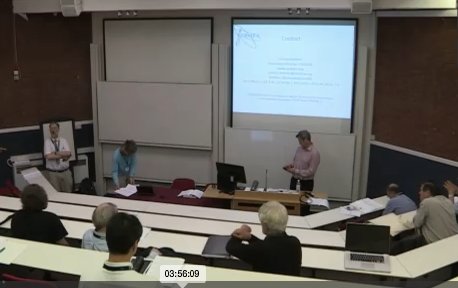
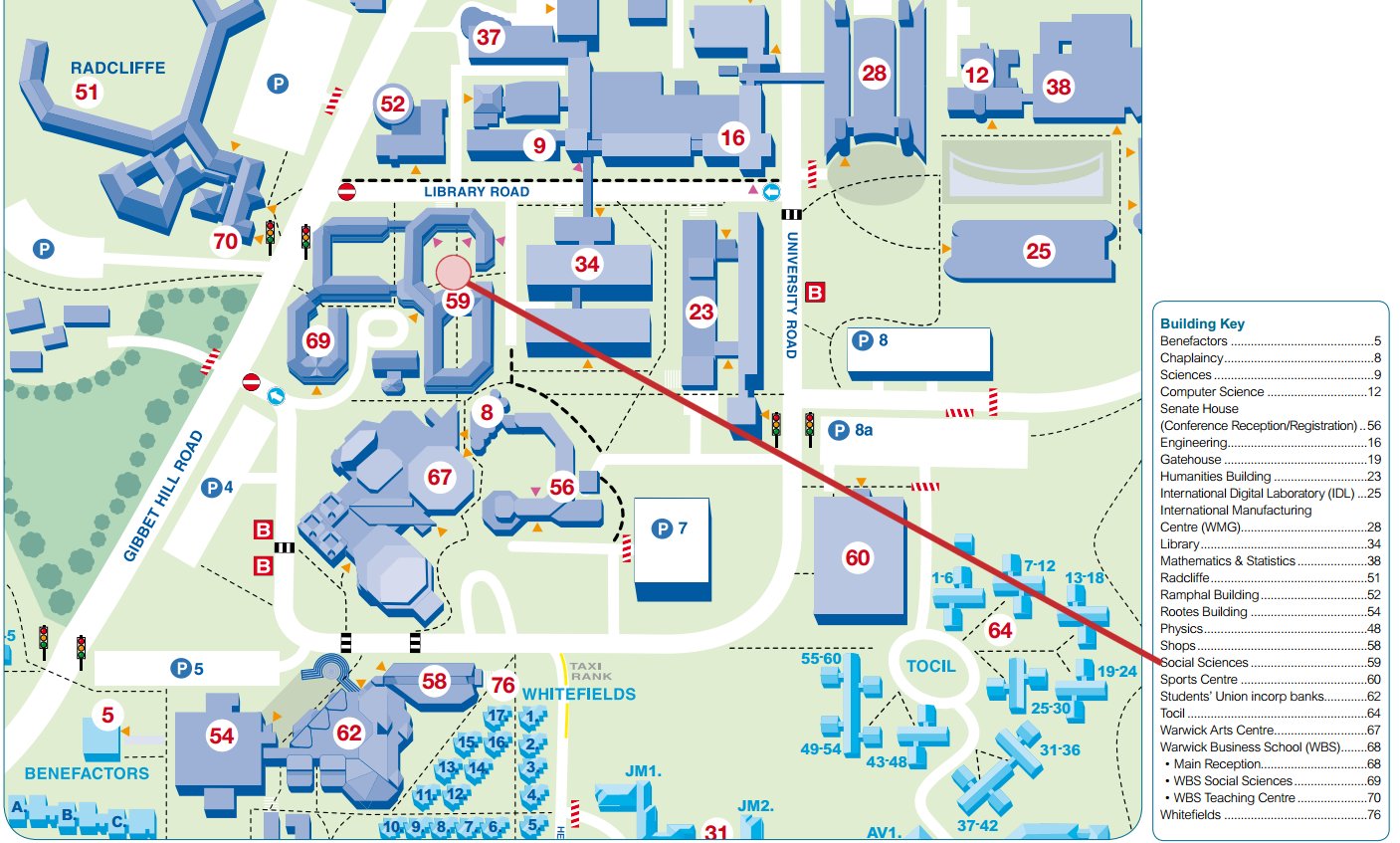
Registration
There is no charge for attending the Symposium. However, places are limited and must be pre-booked. Please register using the ECM 28 online registration form.
Travel
Based on information on the University of Warwick website, which also has additional information.
Air
Nearest international airports are:- Birmingham International Airport (BHX): to get to the University from Birmingham airport either: (cheapest) take the train to Coventry (£3.50 return, 10 mins) and then local bus (£1.60 single, 25 mins; exact fare must be paid to driver) or taxi (about £10, 15 mins) to the University of Warwick; or (possibly slightly quicker, but expensive - about £30 for the half-hour ride) take a taxi from the airport direct to the University of Warwick
- London Heathrow (LHR) has many more flights, and is about 2 hours away from Coventry either by bus (National Express) or by rail (via London). The bus option is simpler, and cheaper. Departures from Heathrow Airport on 21 August at 07:15, 08:30, 09:45, 11:00, 12:15, 13:30.
- Manchester (MAN): rail connections from Manchester Airport to Coventry (usually 2 or 3 per hour). Journay time 2h 15m - 2h 45m; cost about £16-£50.
Rail
Nearest main-line railway station is Coventry, served directly from London Euston, Birmingham New Street (on average every 10 minutes during the day), Birmingham International (serving the airport, on average every 10 minutes during the day), Oxford, Leicester.
Coach
If travelling by coach, the most convenient major centre is Coventry which is well served by national links. From Coventry, there are frequent local bus services to the University. Passengers may be able to alight a coach at the University central campus bus stop; however this needs to be booked 24 hours in advance of travel and not all services offer this option. Details of coach travel can be obtained from . Megabus also offer a coach service to Coventry from a selection of locations around the United Kingdom, including London. A Megabus coach stop is located at Cannon Park Shopping Centre, a 5-10 minute walk from central campus.
Local bus
There are regular bus services to the University campus from Coventry City Centre and Coventry Rail Station with the journey taking approximately 30 minutes.
- National Express Coventry
 service number 12 runs from the city centre bus station (Pool Meadow) via Coventry Rail Station to the University Central Campus. Service number 11 follows the same route but continues on from campus to Leamington Spa, via Kenilworth. Number 12 & 11 timetable
service number 12 runs from the city centre bus station (Pool Meadow) via Coventry Rail Station to the University Central Campus. Service number 11 follows the same route but continues on from campus to Leamington Spa, via Kenilworth. Number 12 & 11 timetable

- The Travel De Courcey
 360a/360c route runs in a loop from and back to the University Hospital via Arena Tesco, Eastern Green, University of Warwick, Cannon Park, Cheylesmore, Jaguar Land Rover, Willenhall and Clifford Bridge Road. Number 360a/360c timetable
360a/360c route runs in a loop from and back to the University Hospital via Arena Tesco, Eastern Green, University of Warwick, Cannon Park, Cheylesmore, Jaguar Land Rover, Willenhall and Clifford Bridge Road. Number 360a/360c timetable

- Stagecoach
 also provides a service that passes the University. The Stagecoach service X17 runs from the city centre, passing the junction of Gibbet Hill Road and Kenilworth Road. The entrance to the Gibbet Hill campus is about 5 minutes walk from this bus stop. After reaching campus this service goes on to Kenilworth, Leamington Spa, Warwick Hospital and Warwick Town Centre. X17 timetable
also provides a service that passes the University. The Stagecoach service X17 runs from the city centre, passing the junction of Gibbet Hill Road and Kenilworth Road. The entrance to the Gibbet Hill campus is about 5 minutes walk from this bus stop. After reaching campus this service goes on to Kenilworth, Leamington Spa, Warwick Hospital and Warwick Town Centre. X17 timetable
- If you are travelling from Leamington Spa, Stagecoach provides a dedicated frequent bus service, the Unibus (U1) that passes through campus. There is a second version of this route that passes through Kenilworth and is named the U2. For information on this service, please visit the Stagecoach
 website. This service also covers Coventry City Centre and Coventry Rail Station on Sundays and Public Bank Holidays. Unibus (U1 & U2) timetable
website. This service also covers Coventry City Centre and Coventry Rail Station on Sundays and Public Bank Holidays. Unibus (U1 & U2) timetable
- The Travel Coventry service number 11 also connects Leamington Spa and Kenilworth with the university campus and Coventry. Number 11 timetable


Bus Travel tips
- Travel Coventry buses do not usually give change so make sure you have the correct money available before making your journey. You can find information about fares on the National Express Coventry website but it is best to check with the driver when you board the bus.
- Stagecoach buses do give change on the majority of their services.
- From Coventry Rail Station visitors should follow the signs to Warwick Road (a 2 minute walk) and from there catch the Travel Coventry services 11, 12 or U17 (Sundays only), which travel onto the main campus - see above.
Road
- From the North: From the M69/M6 interchange (M6 Jct 2) take A46 towards Warwick and Coventry S & E. After approximately 3.5 miles you will reach Tollbar End roundabout (junction with A45). At the roundabout, follow signs for A45 Birmingham. After approximately 3 miles you will cross the A429 (Kenilworth Road); half a mile after this junction take the left-hand turn signposted 'University of Warwick'. Follow signs for University of Warwick (and Warwick Arts Centre) across two roundabouts. You are now approaching the University of Warwick from Kirby Corner Road.
- From the South East: From M45 Jct 1 take A45 towards Coventry. After approximately 7 miles you will reach Tollbar End roundabout (junction with A46) follow signs for A45 Birmingham. Now follow directions as for arriving from the North.
- From the South: From M40 Jct 15 take A46 towards Coventry. After approximately 8 miles leave A46 at junction signposted 'University of Warwick and Stoneleigh'. After a further 1.5 miles you will cross the A429 (Kenilworth Road). You are now approaching the University of Warwick from Gibbet Hill Road.
- From the West: From M42 Jct 6 take A45 towards Coventry. After approximately 9 miles you will pass a large Sainsbury store on your left. At the next roundabout (Fire Station on right) take the right-hand exit, signposted 'University and Canley'. Follow signs for University of Warwick (and Warwick Arts Centre) across two roundabouts. You are now approaching the University of Warwick from Kirby Corner Road.


![[CIF home page] [CIF logo]](https://www.iucr.org/__data/assets/image/0015/131037/CIF_white.png)
![[B. McMahon]](https://www.iucr.org/__data/assets/image/0003/77007/B_McMahon.jpg) From its beginnings as a descriptive framework for structure determination experiments, CIF has grown to be a powerful framework for many aspects of crystallographic practice. It describes or is actively used in raw data collection (such as diffraction images), data reduction (e.g. as structure factors or Rietveld profiles), structure solution and refinement, and the publication, database curation and visualisation of crystal and molecular structures. Although not the only format in common use in the structural sciences, it is central to structure determination of small-unit-cell and macromolecular structures, and its ontologic approach informs the best practice of information and data handling throughout crystallographic researches.
From its beginnings as a descriptive framework for structure determination experiments, CIF has grown to be a powerful framework for many aspects of crystallographic practice. It describes or is actively used in raw data collection (such as diffraction images), data reduction (e.g. as structure factors or Rietveld profiles), structure solution and refinement, and the publication, database curation and visualisation of crystal and molecular structures. Although not the only format in common use in the structural sciences, it is central to structure determination of small-unit-cell and macromolecular structures, and its ontologic approach informs the best practice of information and data handling throughout crystallographic researches. A jewel in the crown of structural biology, the Protein Data Bank is an unparalleled archive of protein and nucleic acid structures. Its operation depends on information-rich relational databases, the schemas for which are efficiently expressed in the macromolecular CIF (mmCIF) formalism. Discrete entities that may be stored in the databases are characterised in CIF-format data dictionaries, which express ontologies widely used in areas as diverse as structural genomics, NMR, cryo-electron microscopy and protein production.
A jewel in the crown of structural biology, the Protein Data Bank is an unparalleled archive of protein and nucleic acid structures. Its operation depends on information-rich relational databases, the schemas for which are efficiently expressed in the macromolecular CIF (mmCIF) formalism. Discrete entities that may be stored in the databases are characterised in CIF-format data dictionaries, which express ontologies widely used in areas as diverse as structural genomics, NMR, cryo-electron microscopy and protein production.![[B. H. Toby]](https://www.iucr.org/__data/assets/image/0004/79609/Brian_Toby.jpg) Powder diffraction may well be the impoverished cousin of single crystal diffraction, but for many materials and measurements there is no other choice; structural analyses have been performed from powders for materials ranging from simple salts to proteins. Many other types of material characterizations can be performed with powder diffraction. Excellent instruments are available that measure powder diffraction in different ways, depending on the needs of the study and the type of illumination source. Successful modeling requires that data be kept in a form close to the original measurement, which creates complexity for a powder CIF dictionary (pdCIF). It has been nearly 15 years since the initial pdCIF dictionary was completed and the successes and failures of pdCIF will be considered.
Powder diffraction may well be the impoverished cousin of single crystal diffraction, but for many materials and measurements there is no other choice; structural analyses have been performed from powders for materials ranging from simple salts to proteins. Many other types of material characterizations can be performed with powder diffraction. Excellent instruments are available that measure powder diffraction in different ways, depending on the needs of the study and the type of illumination source. Successful modeling requires that data be kept in a form close to the original measurement, which creates complexity for a powder CIF dictionary (pdCIF). It has been nearly 15 years since the initial pdCIF dictionary was completed and the successes and failures of pdCIF will be considered. Crystal structure determination has become a high-throughput activity, and even at the level of the departmental laboratory, automation is increasingly important in managing the experiment and, crucially, the data collected from the experiment and its subsequent processing, analysis and dissemination. The UK National Crystallography Service is a medium-scale facility which needs to address issues of data management, accountability and dissemination, on top of its efforts to achieve best experimental practice. In providing a service to chemists as well as crystallographers, it has amassed considerable experience in cross-discipline ontology building, data publication via repository platforms, and integration with laboratory management systems.
Crystal structure determination has become a high-throughput activity, and even at the level of the departmental laboratory, automation is increasingly important in managing the experiment and, crucially, the data collected from the experiment and its subsequent processing, analysis and dissemination. The UK National Crystallography Service is a medium-scale facility which needs to address issues of data management, accountability and dissemination, on top of its efforts to achieve best experimental practice. In providing a service to chemists as well as crystallographers, it has amassed considerable experience in cross-discipline ontology building, data publication via repository platforms, and integration with laboratory management systems.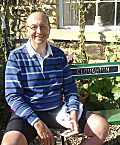 The IUCr Executive Committee has charged a Working Group with an assessment of the potential benefits of depositing raw experimental data sets (with initial emphasis on X-ray diffraction images), and the cost, technical and structural ramifications of doing so. There are a number of potential locations for depositing raw images that allow their reuse in validation, re-refinements, reanalysis for new science, education and software development – for example, in discipline-specific data centres, in large-scale instrument facilities, or in institutional repositories. These are not necessarily exclusive (for example, a central data centre might archive only data sets associated with published structures), and initiatives such as the Australian TARDIS demonstrate approaches to federating separate repository platforms. Crucial to interoperability between such federated archives will be well-defined metadata and procedural standards.
The IUCr Executive Committee has charged a Working Group with an assessment of the potential benefits of depositing raw experimental data sets (with initial emphasis on X-ray diffraction images), and the cost, technical and structural ramifications of doing so. There are a number of potential locations for depositing raw images that allow their reuse in validation, re-refinements, reanalysis for new science, education and software development – for example, in discipline-specific data centres, in large-scale instrument facilities, or in institutional repositories. These are not necessarily exclusive (for example, a central data centre might archive only data sets associated with published structures), and initiatives such as the Australian TARDIS demonstrate approaches to federating separate repository platforms. Crucial to interoperability between such federated archives will be well-defined metadata and procedural standards. The Rutherford Appleton Laboratory is a UK National Facility that handles a considerable amount of experimental research, and operates many instruments that generate large volumes of data such as the ISIS Pulsed Neutron Source, Central Laser Facility, and Diamond Light Source. It has developed a Core Scientific Metadata Model (CSMD) for the management of the data resources of the facilities in a uniform way. This talk discusses the emerging opportunities opened up by the availability of systematically managed data in a large laboratory setting and the technical barriers of making extensive use of them in real world open data infrastructure developments. The latest developments of CSMD will be presented to highlight the current direction we are undertaking in the context of the PaNData-ODI project, a collaborative European project involving thirteen major world class research laboratories that operate one or more neutron or photon sources in Europe.
The Rutherford Appleton Laboratory is a UK National Facility that handles a considerable amount of experimental research, and operates many instruments that generate large volumes of data such as the ISIS Pulsed Neutron Source, Central Laser Facility, and Diamond Light Source. It has developed a Core Scientific Metadata Model (CSMD) for the management of the data resources of the facilities in a uniform way. This talk discusses the emerging opportunities opened up by the availability of systematically managed data in a large laboratory setting and the technical barriers of making extensive use of them in real world open data infrastructure developments. The latest developments of CSMD will be presented to highlight the current direction we are undertaking in the context of the PaNData-ODI project, a collaborative European project involving thirteen major world class research laboratories that operate one or more neutron or photon sources in Europe.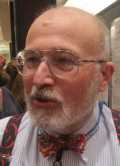 A specific aspect of interoperability within large scientific facilities is the management of different data formats associated with different fields. NeXus, HDF5 and CIF are scientific data formats that overlap in some areas (e.g. in the capture and management of X-ray diffraction images), and there is considerable benefit to be gained by harmonising their content and working towards maximum interoperability. Format conversion at the syntactic level can be a straightforward process, but truly interoperable software applications require functional mappings between different representation standards. An initial approach to this is being attempted by constructing a DDL2 dictionary, acting as a concordance between the existing NeXus and imgCIF formats. Full interconvertibility between NeXus and imgCIF relies on methods evaluation, and may be possible using the new dictionary definition language DDLm and an evaluation engine (such as dREL).
A specific aspect of interoperability within large scientific facilities is the management of different data formats associated with different fields. NeXus, HDF5 and CIF are scientific data formats that overlap in some areas (e.g. in the capture and management of X-ray diffraction images), and there is considerable benefit to be gained by harmonising their content and working towards maximum interoperability. Format conversion at the syntactic level can be a straightforward process, but truly interoperable software applications require functional mappings between different representation standards. An initial approach to this is being attempted by constructing a DDL2 dictionary, acting as a concordance between the existing NeXus and imgCIF formats. Full interconvertibility between NeXus and imgCIF relies on methods evaluation, and may be possible using the new dictionary definition language DDLm and an evaluation engine (such as dREL). Although this meeting focuses on the technical aspects of sound data management, because we believe the benefits of this are self-evident to scientists who are used to taking the greatest care in analysing and using data, we should be aware also of the general research policy framework in which so much modern research is located. At the level of national and international science policy, funding bodies increasingly require evidence for best practice in data management; likewise, open-access mandates for publications may become a reality. This presentation contextualises the practice of our science within the evolving policy framework for publicly funded research.
Although this meeting focuses on the technical aspects of sound data management, because we believe the benefits of this are self-evident to scientists who are used to taking the greatest care in analysing and using data, we should be aware also of the general research policy framework in which so much modern research is located. At the level of national and international science policy, funding bodies increasingly require evidence for best practice in data management; likewise, open-access mandates for publications may become a reality. This presentation contextualises the practice of our science within the evolving policy framework for publicly funded research. Structural journals published by the IUCr have an efficient workflow built around the CIF standard. For small-unit-cell structures, authors submit their articles in this format, building on files created directly by their structure solution/refinement software. The processed experimental data from which the structure has been determined (structure factors, Rietveld profiles) are also uploaded in this format, allowing stringent technical peer review of the quality of the structural modelling. All published structures are accompanied by the underlying data that would permit their redetermination, and can be explored in the online publication through three-dimensional visualisation and analysis tools.
Structural journals published by the IUCr have an efficient workflow built around the CIF standard. For small-unit-cell structures, authors submit their articles in this format, building on files created directly by their structure solution/refinement software. The processed experimental data from which the structure has been determined (structure factors, Rietveld profiles) are also uploaded in this format, allowing stringent technical peer review of the quality of the structural modelling. All published structures are accompanied by the underlying data that would permit their redetermination, and can be explored in the online publication through three-dimensional visualisation and analysis tools. When small structures are submitted for publication in IUCr journals, they are analysed as part of the peer review process by the software suite checkCIF. The goal of this analysis is to provide an objective assessment of the quality and reliability of the published structure, with reference both to the available experimental data and the level of consistency with known chemistry.
When small structures are submitted for publication in IUCr journals, they are analysed as part of the peer review process by the software suite checkCIF. The goal of this analysis is to provide an objective assessment of the quality and reliability of the published structure, with reference both to the available experimental data and the level of consistency with known chemistry. For biological macromolecules, where structures and experimental data have traditionally been deposited in a central archive (the Protein Data Bank), integrating structural data with derivative publications is more complex. IUCr journals have developed an online publication tool that can extract deposited macromolecular data from the archive, and prompt the author for the additional information required for the fullest characterisation of a macromolecular structure determination. Again, the goal is to maximise the integrity of the scientific discussion.
For biological macromolecules, where structures and experimental data have traditionally been deposited in a central archive (the Protein Data Bank), integrating structural data with derivative publications is more complex. IUCr journals have developed an online publication tool that can extract deposited macromolecular data from the archive, and prompt the author for the additional information required for the fullest characterisation of a macromolecular structure determination. Again, the goal is to maximise the integrity of the scientific discussion. Increasingly, the structural biology community is aware that the quality of structures deposited in the Protein Data Bank (PDB) needs critical assessment using informative, well-defined and community-accepted validation methods. To obtain recommendations on validation methods and criteria to be applied to newly deposited as well as existing structures in the PDB, the Worldwide Protein Data Bank (wwPDB) has convened several Validation Task Forces (VTFs). The validation methods and criteria suggested by the wwPDB X-ray VTF will be used to validate all X-ray structures deposited in the PDB as well as all crystal structures already in the archive. The talk will highlight the importance of validation and describe the implementation of the recommendations of the X-ray VTF. Salient features of the validation reports generated by the new wwPDB X-ray validation pipeline will also be discussed. It is hoped that all journals that publish biomacromolecular structure papers will make submission of these reports mandatory whenever they receive a manuscript describing a new structure.
Increasingly, the structural biology community is aware that the quality of structures deposited in the Protein Data Bank (PDB) needs critical assessment using informative, well-defined and community-accepted validation methods. To obtain recommendations on validation methods and criteria to be applied to newly deposited as well as existing structures in the PDB, the Worldwide Protein Data Bank (wwPDB) has convened several Validation Task Forces (VTFs). The validation methods and criteria suggested by the wwPDB X-ray VTF will be used to validate all X-ray structures deposited in the PDB as well as all crystal structures already in the archive. The talk will highlight the importance of validation and describe the implementation of the recommendations of the X-ray VTF. Salient features of the validation reports generated by the new wwPDB X-ray validation pipeline will also be discussed. It is hoped that all journals that publish biomacromolecular structure papers will make submission of these reports mandatory whenever they receive a manuscript describing a new structure.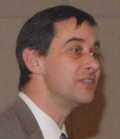 The Cambridge Structural Database of organic and metal-organic structures is one example of the curated archives of structural data that have been crucially important crystallographic and chemical resources for many decades. Many structural analyses based on the holdings in such databases rely on the quality and reliability of the individual structures. Historically, CCDC's Scientific Editors have worked hard to validate the individual depositions, a task greatly helped by the adoption of CIF as a community standard format. CCDC now applies probabilistic computational tools to determine the 'chemistry' represented by a CIF alongside expert human analysis.
The Cambridge Structural Database of organic and metal-organic structures is one example of the curated archives of structural data that have been crucially important crystallographic and chemical resources for many decades. Many structural analyses based on the holdings in such databases rely on the quality and reliability of the individual structures. Historically, CCDC's Scientific Editors have worked hard to validate the individual depositions, a task greatly helped by the adoption of CIF as a community standard format. CCDC now applies probabilistic computational tools to determine the 'chemistry' represented by a CIF alongside expert human analysis.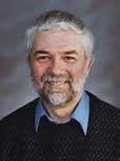 The development of CIF has allowed IUCr journals to capture the structured semantic content of research articles to a very high degree. Hyperlinking between components of the scholarly article (the text, structural data model, experimental data) provides a sound technical basis for mining, validating and reusing scientific data with the help of high-volume robotic tools.
The development of CIF has allowed IUCr journals to capture the structured semantic content of research articles to a very high degree. Hyperlinking between components of the scholarly article (the text, structural data model, experimental data) provides a sound technical basis for mining, validating and reusing scientific data with the help of high-volume robotic tools.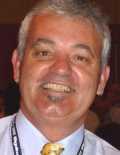 When CIF was adopted as an information exchange standard by the IUCr in 1991, it was, if anything, ahead of the then state of the art. Free-format, extensible, low-overhead - it offered an easy route to implementation by scientific software, much still written in Fortran. By externalising the semantics of its tags to external dictionaries, it allowed ontology development to be decoupled from format, and thus had an important role to play in interoperability between purely crystallographic applications and the wider worlds of structural biology, chemical informatics and laboratory data management, as illustrated elsewhere in this symposium. The latest enhancements to CIF, with the introduction of an even more powerful dictionary definition language that support methods definitions and multiple data models, provide unrivalled potential for taking computer ontologies into completely new territories.
When CIF was adopted as an information exchange standard by the IUCr in 1991, it was, if anything, ahead of the then state of the art. Free-format, extensible, low-overhead - it offered an easy route to implementation by scientific software, much still written in Fortran. By externalising the semantics of its tags to external dictionaries, it allowed ontology development to be decoupled from format, and thus had an important role to play in interoperability between purely crystallographic applications and the wider worlds of structural biology, chemical informatics and laboratory data management, as illustrated elsewhere in this symposium. The latest enhancements to CIF, with the introduction of an even more powerful dictionary definition language that support methods definitions and multiple data models, provide unrivalled potential for taking computer ontologies into completely new territories.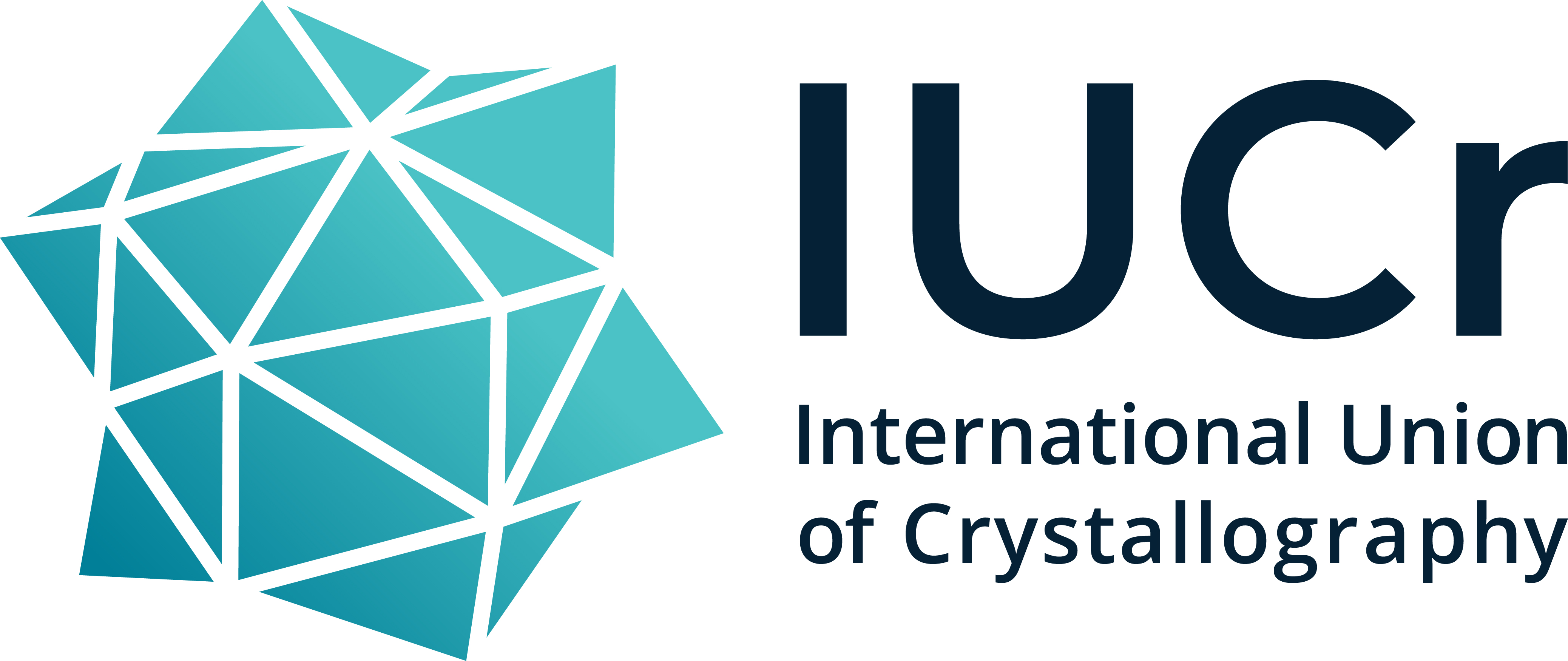
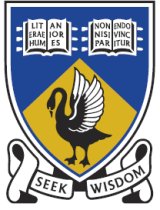


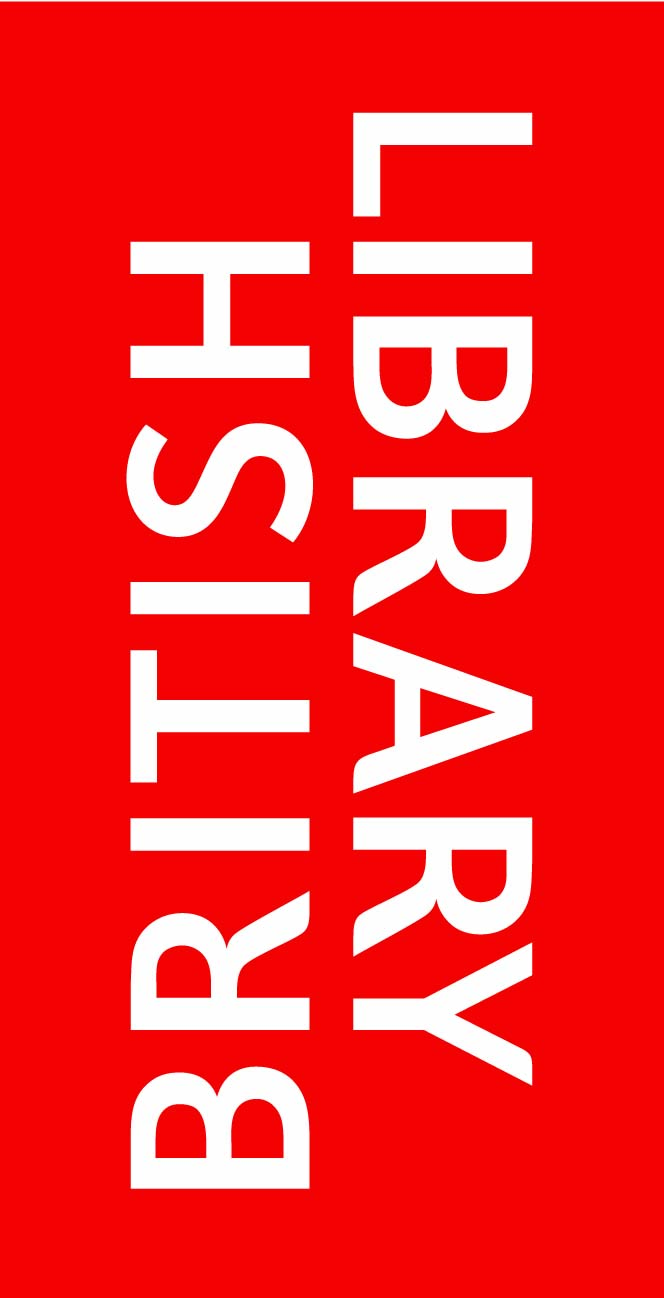
![[CODATA logo]](https://www.iucr.org/__data/assets/image/0007/77794/codatalogosmall.jpg)
![[Wiley logo]](https://www.iucr.org/__data/assets/image/0008/77795/wiley_logo.gif)
![[Royal Society of Chemistry logo]](https://www.iucr.org/__data/assets/image/0013/80230/rsc_logo.png)
![[Elsevier logo]](https://www.iucr.org/__data/assets/image/0007/79117/Elsevierlogo85.gif)
![[Crystallography Open Database logo]](https://www.iucr.org/__data/assets/image/0004/79600/codsmall.jpg)
![[Bruker logo]](https://www.iucr.org/__data/assets/image/0005/79601/bruker_logo.png)